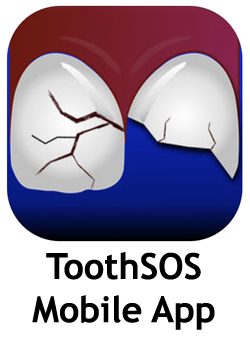 Doctor Staci and the entire NoPo Kids Dentistry team always try to leave time available in the schedule for same day dental emergencies. Dental emergencies can be very alarming because injuries to the mouth tend to bleed a lot. However, as long as you stay relaxed and know what to do, everything will be all right. Children feed off the energy of their parents, so trying to stay calm is so important, even if you are terrified inside!
Doctor Staci and the entire NoPo Kids Dentistry team always try to leave time available in the schedule for same day dental emergencies. Dental emergencies can be very alarming because injuries to the mouth tend to bleed a lot. However, as long as you stay relaxed and know what to do, everything will be all right. Children feed off the energy of their parents, so trying to stay calm is so important, even if you are terrified inside!
If your child falls and loses consciousness it is often best to head to the Emergency Department or if your child falls and is unresponsive, if you have any deeper concerns, or if you are simply unsure please call 911 immediately. Otherwise, call us right away at (971) 978-0009 and let us know what happened (what, when, where, how) and we will do our very best to see your child immediately. If the emergency occurs outside of office hours, you will be able to reach Doctor Staci via the office phone.
When Your Child’s Tooth Gets Knocked Out, Broken, or Changes Position
Anytime your child accidentally knocks out, fractures, or loosens a tooth, you should let us know, so that we can assess what the best course of action is and make plans to follow through.
Knocked Out Tooth
It is not recommended to re-implant or replace baby teeth that have been knocked out because there is a chance that in doing so it could damage the adult tooth that is waiting to erupt. That doesn’t mean that you should not take action when your child accidentally loses a baby tooth. Here are some steps that you can take following the accidental loss of a tooth:
- Recover the tooth, making sure to grip it only by the crown.
- Avoid touching the broken of bloody end of the tooth, as this can damage it.
- Gently rinse the tooth off with some water if it has dirt or debris on it, and avoid scrubbing the tooth.
- If the child is young, place the tooth in a Tupperware with some milk to transport it to our office. Don’t place the tooth back in the mouth of a young child, as they may swallow it or aspirate it.
- If the child is older, you can have them gently place it back into the socket, or suggest that they hold it between their lip and gums to transport it to our office.
- Make sure to keep the tooth moist while you transport it to our office. Teeth that are allowed to dry out may become damaged and success rates of re-implanting successfully go down significantly.
- Call us as soon as you can to let us know that you have a dental emergency and are on your way.
Fractured tooth
A tooth fracture may involve the outer layers of the tooth (enamel and dentin) or extend to the blood vessels and nerves (pulp) that run down the middle of the tooth. A tooth fracture which extends to the pulp requires immediate treatment in order to give the tooth the best chance of remaining healthy. If you see the tooth bleeding from the center (not from the gums), it is important that your child be seen right away.
Loose/Displaced tooth
A loose tooth may be a sign that the tooth is fractured beneath the gumline. An X-ray will help to determine the best course of treatment. On the way to the office, have your child bite gently on a washcloth or gauze pad/cotton ball to apply gentle pressure to the tooth.
When Your Child Has a Toothache or Oral Pain
When a toothache or oral pain occurs, there is usually a reason. Often times, if a tooth has a large cavity in it, children can experience pain with eating due to food impaction. Random, spontaneous and nighttime pain is more concerning and can be a sign of a dental infection. Also, gingivitis (or gum inflammation) can be painful, so if your child isn’t brushing and flossing properly, the discomfort they are having could simply be that their gums are sick. Other reasons for pain can be oral ulcers, natural tooth exfoliation (losing their baby teeth), tooth eruption discomfort, a restoration that is too high, or hot/cold sensitivity. If any of these issues persist, do not hesitate to call us to schedule an appointment for an evaluation.
Toothache
If your child complains of a toothache, take the following steps.
- Clean the area with warm water, using the rinse and spit method. Do not medicate the area directly. Please do not use over-the-counter topical numbing agents as they can have negative side effects in children. Ibuprofen and/or Tylenol are preferred.
- Do a visual inspection of the area, look for food impaction or other things that might be stuck between the teeth, and remove what you find by gently flossing the area.
- Apply a cold compress to the cheek outside of the sore spot in the mouth.
- Contact us to let us know what is going on.
When Your Child Bites their Cheek or Tongue
If your child receives a cut or bites themselves on the cheek or the tongue, there are a few things you can do to alleviate the pain and comfort the child.
- Rinse the mouth gently with some warm water.
- Apply a cold compress to the outside of the mouth near the site.
When Your Child Has Swelling or Mouth Infection
Swelling of the gums or face can be a sign of dental infection. It can appear as a small bump above the affected tooth or as facial swelling that extends outside of the mouth. Antibiotics may be indicated if the infection is causing fever, pain, extensive swelling, and difficulty breathing or swallowing.
Ectopic Eruption or Teeth Coming in the “Wrong Spots”
Very frequently we receive calls from parents with concerns that their child has “shark teeth” or adult teeth erupting behind or beside a baby tooth. While not a true dental emergency, this can be a sign that your child has crowding and may need orthodontic intervention in the future. We usually recommend to let Mother Nature do her thing and encourage the child to get the baby teeth out on their own, but if a parent ever needs reassurance, please do not hesitate to call our office so Doctor Staci can give advice on the proper recommendations.
If you have any questions about a potential dental emergency, contact Doctor Staci at NoPo Kids Dentistry today and she can discuss the best options for your child.
Check out the App from the International Association of Dental Traumatology called ToothSOS for more advice on dental emergencies for your child. It’s a great resource to have right at your fingertips!

